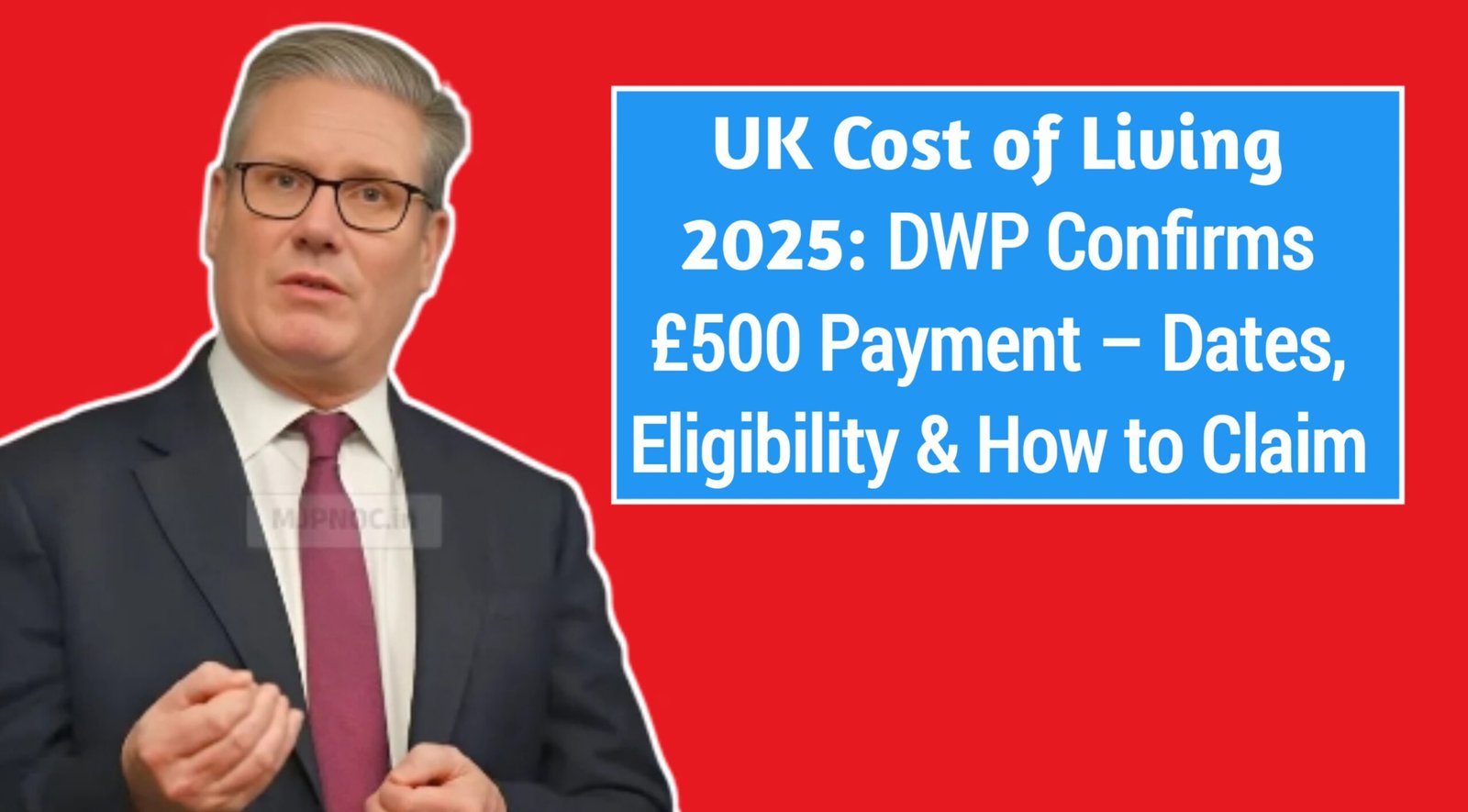The rising cost of living in the UK continues to be a challenge for many households. To support those most affected, the Department for Work and Pensions (DWP) has confirmed a new £500 payment aimed at helping eligible citizens manage essential expenses. This article breaks down all the details you need to know, including eligibility, payment dates, and how to claim.
What Is the £500 Cost of Living Payment?
The £500 payment is a one-off support measure introduced by the DWP to help people cope with increasing household costs, including energy bills, groceries, and transportation. The initiative is part of the UK government’s wider efforts to ease the financial burden on citizens during a period of inflation and economic uncertainty.
This payment is separate from regular benefits and is designed to reach those who are most in need, ensuring that pensioners, low-income families, and individuals receiving certain benefits can get timely financial assistance.
Who Is Eligible for the Payment?
Eligibility for the £500 payment is based on several factors. The DWP has outlined the following criteria:
- Individuals receiving state pensions.
- People currently claiming Universal Credit or Pension Credit.
- Those on other qualifying benefits such as Employment and Support Allowance (ESA) or Income Support.
- Residents of the UK who meet the minimum residency requirements.
It is important to note that the payment is automatic for most eligible recipients. However, some individuals may need to apply or provide additional documentation to confirm their eligibility.
How Much Will You Receive?
Eligible individuals will receive £500. In some cases, households with multiple eligible members may receive payments for each qualifying person. The payment is designed to provide immediate relief and can help cover costs like heating, groceries, or transportation.
When Will the Payment Be Made?
The DWP has confirmed that payments will begin in September 2025. While specific dates may vary depending on the individual’s circumstances and method of payment, most recipients can expect to receive the money directly into their bank accounts within a few weeks of confirmation.
For those receiving their benefits via direct deposit, the process is typically automatic, meaning there is no need to fill out additional forms. Paper-based benefit recipients may receive payments via cheque or alternative arrangements.
How to Claim the Payment
For many recipients, no action is required as the payment is automatic. However, if you do not receive the payment and believe you are eligible, the following steps can help:
- Check Your Eligibility: Confirm that you meet the criteria outlined by the DWP.
- Contact the DWP: If automatic payment does not occur, you can contact the DWP directly via phone or their official website to initiate a claim.
- Provide Required Information: You may need to provide identification, proof of benefits, or residency documents.
- Receive Payment: Once your eligibility is confirmed, the £500 payment will be processed and delivered to your chosen payment method.
Why the DWP Introduced This Payment
The UK has seen a significant rise in living costs over the past few years, particularly in energy prices, food, and housing. The government recognized the need for immediate financial support for those most affected, especially pensioners and low-income households.
This £500 payment is part of a broader strategy to reduce financial stress and ensure that citizens can maintain essential living standards during economically challenging times.
What Expenses Can the Payment Cover?
While the DWP does not restrict how the £500 payment is used, it is intended to help cover essential costs. Common uses include:
- Utility bills (gas, electricity, water)
- Food and groceries
- Transportation costs, including fuel and public transport
- Healthcare or prescription expenses
- Household necessities
Recipients are encouraged to use the funds to alleviate financial pressure in the areas most relevant to their household needs.
Impact on Other Benefits
The £500 cost of living payment is designed to be tax-free and does not affect other benefits in most cases. However, it is always recommended to check with the DWP or a financial advisor if you are receiving multiple benefits, to ensure there are no unexpected implications.
How to Stay Updated
The DWP regularly updates information regarding payments, eligibility, and deadlines. To stay informed:
- Visit the official DWP website.
- Sign up for email or text alerts if available.
- Monitor announcements from local support centres or citizen advice bureaus.
Staying informed ensures that you do not miss out on receiving the payment or any additional support measures introduced in 2025.
Tips for Managing the £500 Payment
Receiving a one-off payment can be a relief, but careful management ensures it makes the maximum impact. Consider these tips:
- Budget Wisely: Prioritize essential expenses first.
- Pay Off Debts: If possible, use part of the payment to reduce high-interest debts.
- Save for Emergencies: Set aside a portion for unforeseen costs.
- Seek Financial Advice: Local community centres or online resources can help you manage the funds effectively.
Conclusion
The DWP’s £500 cost of living payment provides vital support for eligible UK residents facing rising living costs. By understanding eligibility, knowing how and when to claim, and planning wisely, recipients can make the most of this assistance.
As the UK continues to navigate economic challenges, government measures like this are essential in ensuring that pensioners and low-income households receive the help they need. Make sure to check your eligibility and take action if necessary to secure your £500 payment.
